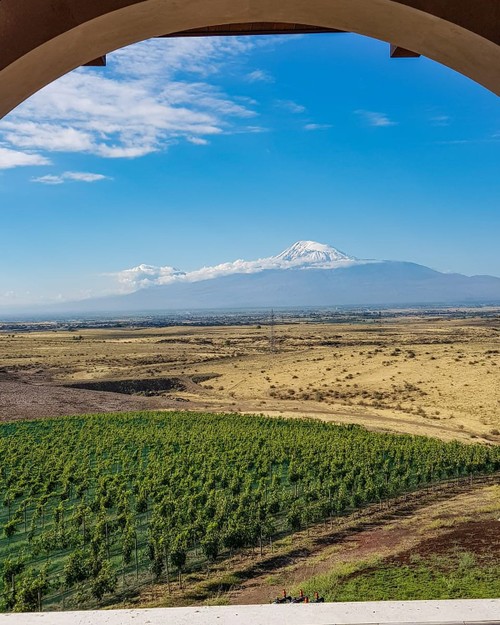 Vineyards and the sleeping volcanic mountain Ararat behind. (Photo courtesy: Facebook Van Ardi wine) Vineyards and the sleeping volcanic mountain Ararat behind. (Photo courtesy: Facebook Van Ardi wine) |
Ngoc Diep: Hello, Ani. Thank you for joining us today. Armenia is a beautiful country of amazing things and is also very famous for its wine. Could you please brief us about the history of Armenia’s wine?
Ani Mouradian: Thank you for having me today. It’s an honor for me to talk about Armenia and our wine because it’s a gem our culture and history. Armenia is one of the oldest wine producing regions of the world. In particular, the oldest known winery was found in Armenia's Areni region, dating back to 6100 BC. The cave is called Areni 1 Cave and it’s a very interesting archaeological site. To this day, Vayots Dzor and Areni and other villages in the vicinity are is still very well known wine production regions with their own endemic grapes.
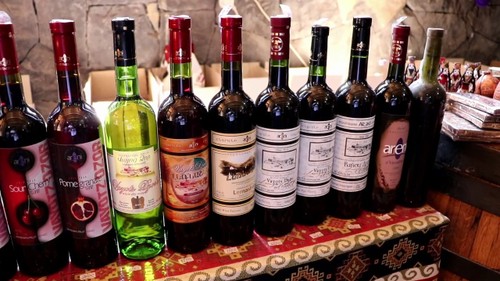 Areni wine. (Photo: internet) Areni wine. (Photo: internet) |
Ngoc Diep: Are there any proofs or historical evidence for that?
Ani Mouradian: Of course, there are many proofs, beginning with written proofs by visiting nations, in particular the Greek armies led by Xenophon passed through Armenian lands and were reportedly treated well with wine and beer. These beverages were prepared and stored in "karases" or clay pots or vases. Archaeological excavations carried out in the 19th and 20th centuries have confirmed that in the 9th century BC, what is modern-day Yerevan was a wine-making centre. Archaeologists have also found wine storehouses with 480 karases in the Teishebaini fortress located in current day Yerevan. These excavations proved Armenia's ancient wine-making culture. Since Armenian independence in 1991, the wine industry has slowly been recovering from a hiatus in the 20th century.
 Cheers to everyone around the world (Photo: Van Ardi Facebook page) Cheers to everyone around the world (Photo: Van Ardi Facebook page) |
Ngoc Diep: What are major influences of vineyard microclimates in Armenia?
Ani Mouradian: Armenia is a landlocked country spread over 29,700 square kilometres, similar in size to the area of the Hawaiian Islands, with a dry, continental climate and a lot of volcanic soil. Altitudes ranging between 1,600 and 5,900 feet are major influences of vineyard microclimates, as is aspect on hillsides and in valleys. I think one of the most unique things about Armenia which is such a small country is that in such a small space there is such a wide variety of landscapes and microclimates.
Ngoc Diep: Could you tell our listeners about major wine regions in Armenia?
Ani Mouradian: Vayots Dzor, Ararat, Aragatsotn, Armavir, Tavush and Artsakh (also known as Nagorno-Karabakh) are key wine regions in Armenia. These are key wine regions with a lot of potentials shining from Vayots Dzor, Aragatsotn, and Tavush for the future although we have a big part of production in Ararat valley.
Vayots Dzor is a south-central region that’s a heartland for native varieties, including Voskehat and Areni—and it’s home to the Areni Wine Festival. Most vineyards are on the Ararat plain, one of the largest plateaus in Armenia. One of the sunniest regions, Ararat is a key producer of white grapes and a major contributor to the brandy industry.
On the southwestern border of Armenia, Armavir has high altitudes and an extreme continental climate. Beautiful Artsakh (also known as Nagorno-Karabakh) has some lower altitudes and is home to the Khndoghni grape variety, which is also very unique.
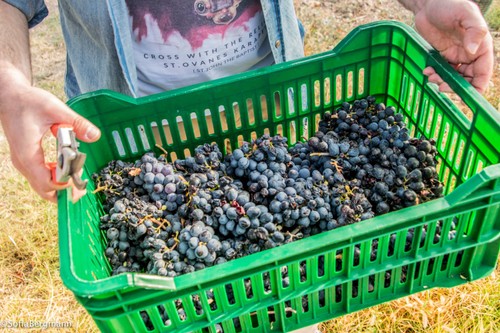 Armenia boasts a wide varieties of indigenous grapes. (Photo: Van Ardi Facebook) Armenia boasts a wide varieties of indigenous grapes. (Photo: Van Ardi Facebook) |
Ngoc Diep: There must be wide grape varieties in Armenia. What are the key ones?
Ani Mouradian: Areni (Areni Noir), Voskehat, and Khndoghni are key grape varieties in Armenia.
Areni – the indigenous red grape variety is widely considered to have huge potential because it’s hardy in the vineyard yet elegant in the glass. Areni is a bit complicated to work with because it’s hard to develop and maintain good Areni wine. However, it’s also strong and persistent and produces quite elegant taste in the glass. Areni is frequently compared to Pinot Noir because of its red fruit aromas of cherry, fresh acidity, and silky tannins. Armenian grapes are so different than anything the palates worldwide have tried, which I think is fantastic.
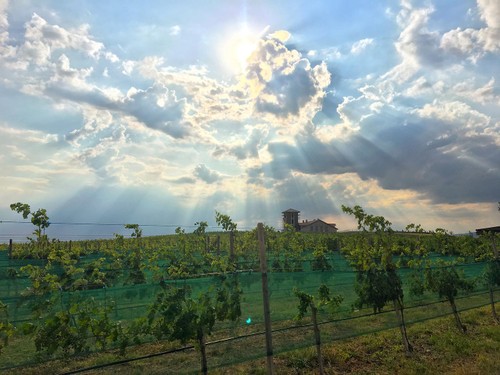 |
Voskehat is aromatic white grape considered one of the finest native grapes in Armenia. It produces rich, medium-to-full-bodied whites, typically with floral, pear, melon, honey flavor and savory notes. Khndoghni is another unique variety to mention. This red variety, traditionally found in the region of Artsakh, is capable of making premium red wines with black fruit aromas, deep color, and firm tannins. Ashtarak is an interesting grape although it was crossed in the 1940s. It has a lot of potentials. It’s rich in color, one of few red grape varieties whose juice is red as well.
 Van Ardi rose Van Ardi rose |
Ngoc Diep: What do you think makes Armenian wine special?
Ani Mouradian: What I think makes Armenian wine special is mostly our unique grape varieties. They are so unique, so different from other flavors that any wine consumers have tried. We have a lot of tourists from around the world and we hear this all the time. The other thing is our unique terroir. We are blessed with very rich volcanic soil, amazing climate, particularly in Aragatsotn region, we have extreme contrast between day and night temperatures, which is fantastic. And finally, the people, a very important element of the terroir is the people who work with those wines. A lot of people who have come into the wine industry today in Armenia are pioneers, passionate individuals, who have left their countries to come to Armenia and invested in wine. They have individual approaches, some of them are dynamic, some of them are organic, and their personalities contribute to our wine being unique.
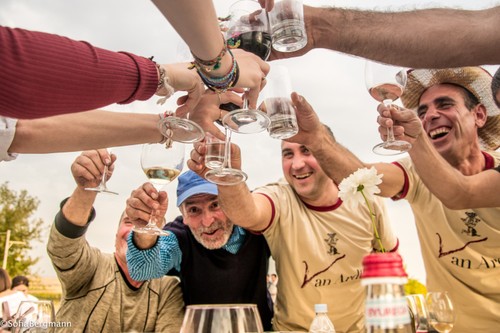 Photo: Van Ardi facebook Photo: Van Ardi facebook |
Ngoc Diep: And which Armenian Wine Brands are popular today?
Ani Mouradian: Well, Van Ardi, our wine came to the market in 2014. We started in 2008. Around then Karas was a very popular name because it was one of very few wine producers. What I want to the say is that the numbers grew very quickly and wineries grew like mushrooms. We went from 5 quality wines 10 years ago to about 20 top quality wines now and currently we have 75 Armenian brands. Other popular names of Armenian brands include Van Ardi, Karas, Zoda, Voskevaz and Hin Areni, Trinity, Old Bridge, these are wine that usually represent Armenian wine at international expos.
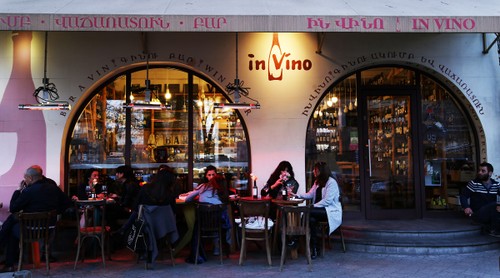 In Vino Wine Bar in Saryan avenue in Yerevan. Photo: jam-news.net In Vino Wine Bar in Saryan avenue in Yerevan. Photo: jam-news.net |
Ngoc Diep: Now if you have to recommend one venue for drinking wine in Armenia’s capital - Yerevan, what would it be and why?
Ani Mouradian: If I have to recommend one venue for drinking wine in Armenia’s capital, that would have to be In Vino. It’s the first wine bar in Armenia. It has the largest selection of wine in Armenia. It’s the place to go if you just focus on wine. If you’re hungry as well then the place to go is the Wine Republic with a big selection of wine and one of the yummiest kitchens in Yerevan. And finally, you can just walk down the Saryan avenue which is after In Vino, and came to be known as the wine street as more wine bars are opening up on this street.
Ngoc Diep: Thank you so much, Ani, for joining us today and sharing with us wonderful stories and experiences about Armenian wine. Take care and wish you all the best in life and work.